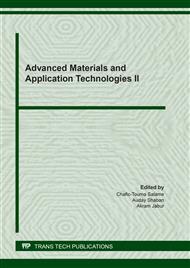p.121
p.131
p.143
p.155
p.163
p.172
p.183
p.188
p.197
Comparison of Emission Levels of Motor Cars, Motorcycles, and Tricycles Using Petrol Engines in Southwestern Nigeria
Abstract:
The emissions of carbon monoxide, carbon dioxide, and hydrocarbon from four stroke-powered motorcars and two stroke-powered motorcycles and tricycles in Southwest Nigeria were examined using an automotive 4-gas analyer. Results show that tricycles produced more hydrocarbon and carbon monoxide emissions than motorcycles, while motorcycles emitted more of these pollutants than the gasoline fueled motor cars. (The gasoline fueled motorcars produced lowest hydrocarbon and carbon monoxide while the tricycles produced the highest hydrocarbon and carbon monoxide emissions). On the contrary, motor cars had the highest mean value of carbon dioxide followed by the motorcycles, while tricycles had the least. This could be attributed to the presence of the catalytic converters in some of the motor cars oxidizing carbon monoxide to carbon dioxide. The mean values of hydrocarbon, carbon monoxide and carbon dioxide emissions from motorcars are 630ppm, 10200ppm and 59900ppm. This is much higher than the NESREA (National Environmental standards and Regulations Enforcement Agency) standards as well as Euro II and Euro III (European standards) for vehicular emission. The mean values for hydrocarbon, carbon monoxide and carbon dioxide emissions from motorcycles and tricycles are (2150ppm, 21530ppm and 31200ppm) and (2820ppm, 24880ppm and 38710ppm) respectively. These results do not comply with Nigeria and European emission standards for hydrocarbon, and carbon monoxide. Tricycles and motorcycles account for higher concentrations of hydrocarbon and carbon monoxide pollutants from mobile sources, while they emit carbon dioxide minimally.
Info:
Periodical:
Pages:
183-187
Citation:
Online since:
September 2021
Authors:
Keywords:
Price:
Сopyright:
© 2021 Trans Tech Publications Ltd. All Rights Reserved
Share:
Citation:


